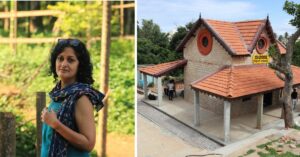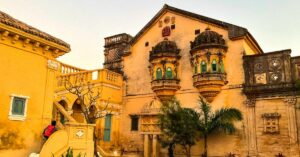From 22 Birds To 347, How This Man Saved Maharashtra’s Vultures From Extinction
Premsagar Mestri founded the Society of Eco-Endangered Species Conservation And Protection (SEESCAP), an NGO protect vultures, as well as their habitat and food sources in Maharashtra and other regions where their population was rapidly declining
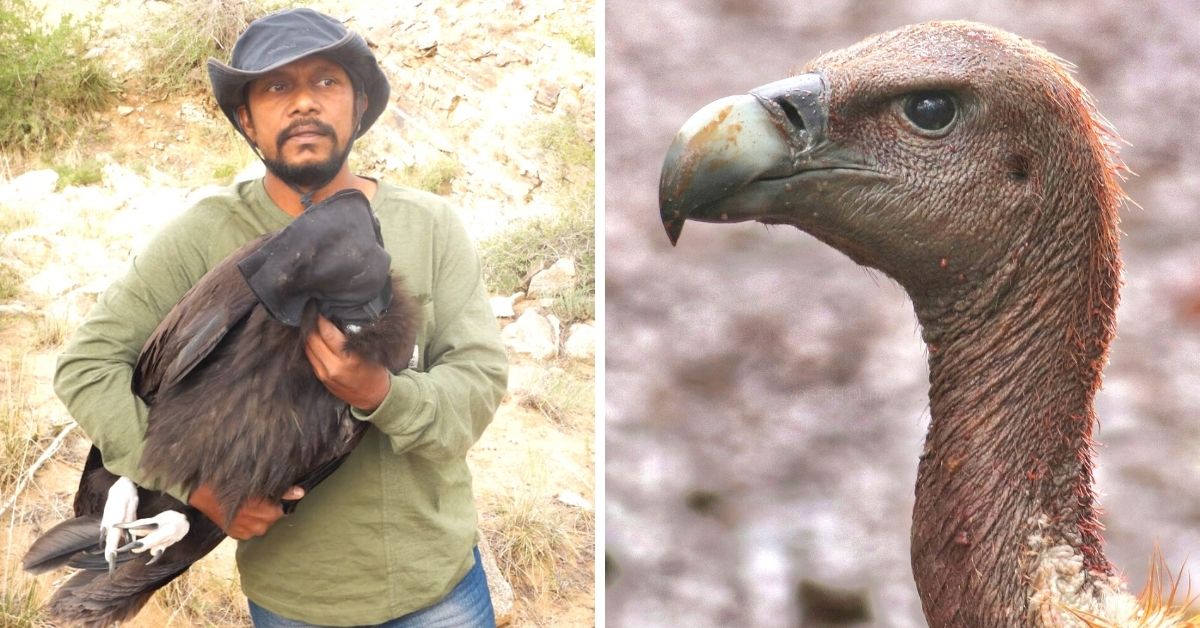
This article is a part of The Better India’s series to highlight the work of those who have dedicated their lives to saving some of the most endangered species of plants and animals in India. This Environment Day, join us in saluting their work.
All nine vulture species found in India – mainly in Rajasthan, Madhya Pradesh, Gujarat, the Himalayas, Karnataka and Maharashtra – are on the brink of extinction today. This is due to rapid habitat loss and poisoning by the Diclofenac drug found in animal carcasses, which the vultures feed on. Other times, these birds die due to starvation.
However, Chirgaon village of Maharashtra’s Konkan region shows a brighter picture. Here, two vulture species, the White-Rumped vulture and the Long-Billed vulture, are often spotted happily basking in the sun, spreading their wings to stretch, cleaning their bodies, and feeding their chicks.
Moreover, in this part of the state, the vultures have no threat to their habitat and never have to worry about starving for meat. However, this beautiful and rare sight was not present a few years ago. Tireless efforts taken by Premsagar Mestri, a wildlife conservator over 20 years have helped increase the population of vultures from 22 to 350 in the area.
‘99% vultures wiped out’
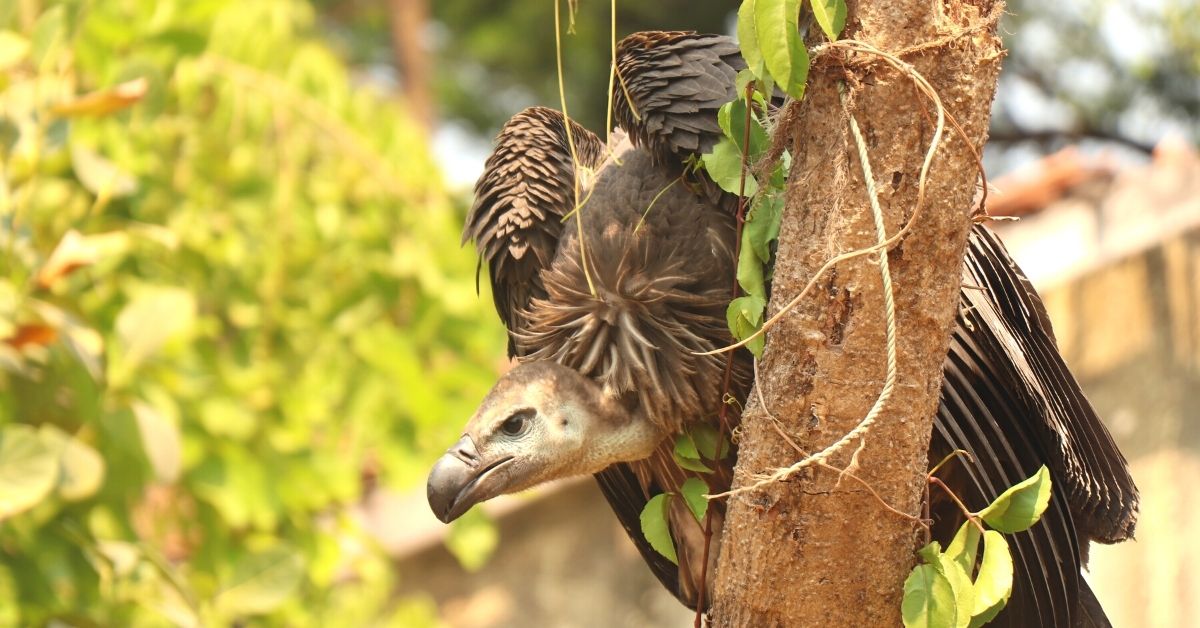
Premsagar, a native of Mahad in Raigad district, was born and raised surrounded by nature. He developed an interest in birds in the early years of his childhood. Planning treks with friends, identifying birds and documenting them became a natural hobby.
He completed his graduation in science in 1992 and pursued masters in the same field, followed by a bachelor’s in education to become a teacher. He says that even during his stint with teaching, he looked for opportunities across India where he could work in rich habitats of different species of birds. “I worked in Uttarakhand, Uttaranchal, Madhya Pradesh, Punjab and remote parts of the country to study and document birds,” adds the 51-year-old.
Around 1998, he quit the job and returned to his hometown for good. However, he had bagged years of experience and developed a much deeper understanding of birds. He had become aware of their importance in nature, the threats they were facing, and the importance of their conservation.
During the years, he also interacted with experts in the field working towards the cause of bird conservation and travelled abroad for research work. “After quitting my job, I started conducting workshops and tours for visitors in Konkan, telling them about bird species found in the area,” he adds.
Around the same time, he came across a news article that shaped the future course of his life. “The newspaper said that vultures were becoming extinct in Maharashtra and stated that the state had lost 99% of its vulture population,” Premsagar says, adding he was appalled by that information.
Prem decided to work towards conservation by identifying the cause behind such a massive decline in the number of this species. “The main reasons were loss of habitat and starvation. The old tall trees had disappeared due to deforestation and been replaced by farm houses constructed by the urban population as vacation homes. These farmhouses stretched about 50 acres and sometimes on 100 acres. The loss of habitat was further aggravated by the massive cashew and mango plantation or farmland. The loss of habitat resulted in the shortage of food,” he says.
Premsagar explains that vultures feed on dead animals, thus acting as natural cleansers of the environment. However, state government policies about clean villages and campaigns forced these dead animals to be buried or disposed of rather than leaving them alone at the mercy of nature.
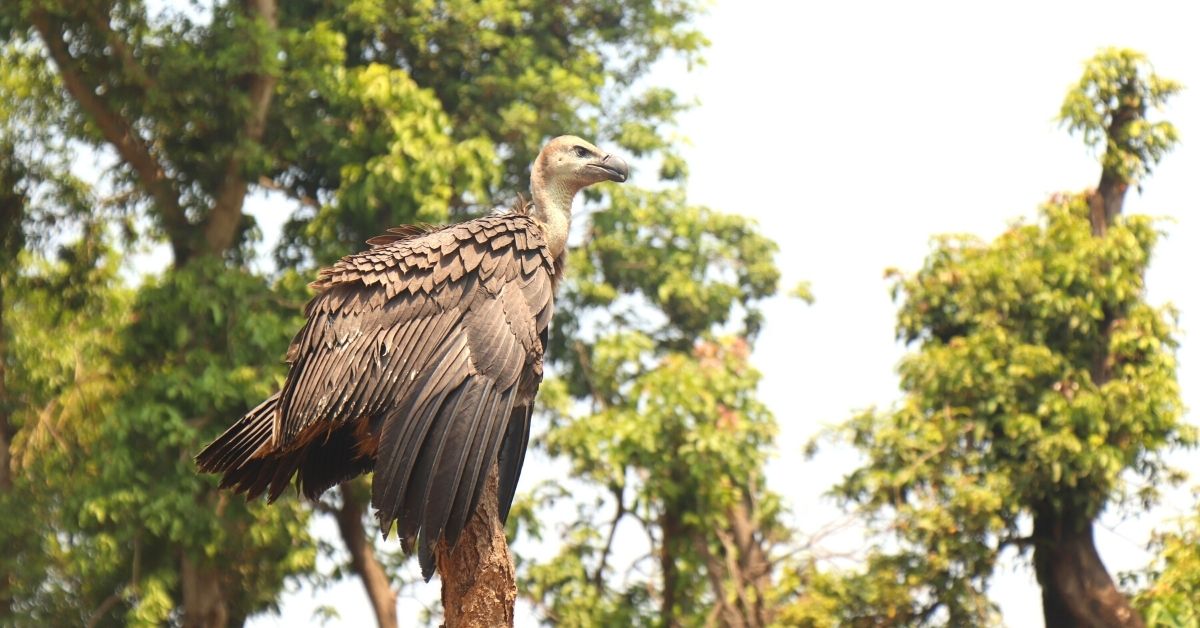
He adds, “Vultures breed once a year and produce one chick. If the chick fails to survive or dies due to lack of food or habitat, a generation is lost. This biological factor also hindered the growth of the population.”
“Diclofenac drug found in animal carcasses is usually a common reason for the death of vultures. The drug is usually fed to animals while treating them for diseases. However, we were surprised to learn that it was not the factor contributing to their decline in this area. I learned that only habitat protection and food safety could save them,” he says, adding the threats remained the same in other neighbouring areas such as Shrivardhan and Mangaon.
The sole guardian
Premsagar set up an NGO, the Society of Eco-Endangered Species Conservation And Protection (SEESCAP), in 1999 and started surveying villages to understand the habitats and potential areas to be protected. He found 22 vultures surviving on a handful of nests. However, villagers told him that they were dwelling in much larger numbers during earlier years.
“A few villagers and I planted around 50,000 trees in the next five years around the habitat area. I worked closely with residents of the area to involve the community in conservation. I explained the importance of vultures and the need to protect them. I also identified sacred groves which could act as habitable zones,” he says.
Premsagar says the sacred groves remain naturally protected by locals due to religious and social beliefs and have no intervention from the forest department. “We also worked on habitat repairs by restoring them. The work extended in Palghar, Nanemachi, Sengaon and other areas,” he adds.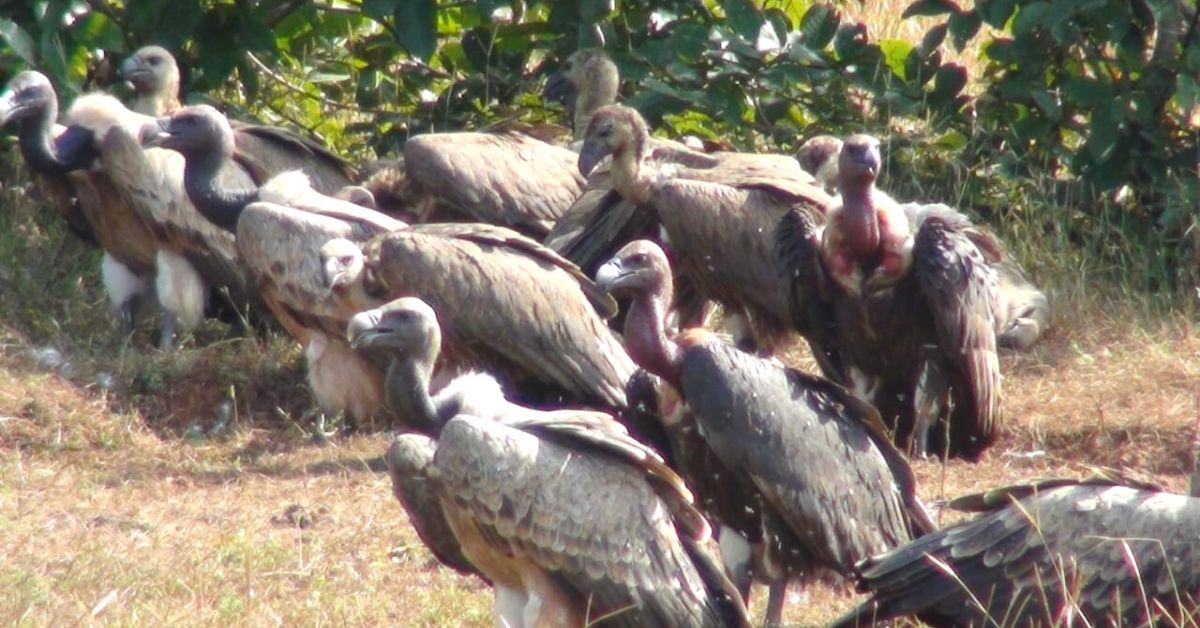
Premsagar also followed up with the forest department to register Kergaon, Khamgaon Govele and Kamshet areas under the forest reserve act. The move helped protect the green zones, which potentially served as habitats. So far, 34 sacred groves remain protected and have become micro-habitats for hornbills, owls, including vultures.
To attract and create awareness among city-dwellers, he started conducting nature camps and visits in the area through the NGO. Premsagar delivered lectures in educational institutions and universities, reaching students studying zoology and biology. “Students from these faculties tend to be inclined towards environment conservation. I offered assistance with dissertation research work if they worked for vultures,” he says, adding the students from 14 institutions, as well as bird lovers, attend weekend camps or take projects for a couple of months.
Premsagar says apart from habitat conservation, he created a network of villagers to ensure efficient food delivery for vultures. “We requested travellers to inform us about the whereabouts of carcasses if they smelled any or spotted them during the journey. Sometimes friends called and shared information. The villagers received remuneration to hand over a cattle or animal in the settlement,” he adds.
He says the villagers also closely monitored the health of the vultures. “If we realised their activities were slow or health had deteriorated, we bought meat from the market ourselves and left it in the feeding zone,” he recalls.
Besides, Premsagar has rescued 17 vultures since 2012. “The chicks often fall off the nest while they learn to fly. The volunteers safely carry the birds to the nearest rescue centres set up by the NGO and are cared for until they become two months old and weigh 2.5 kilos before returning to their habitat,” he adds.
Such regular monitoring, habitat protection and interventions helped to increase the population to 347 by 2019. However, when cyclone Nisarg hit the coasts of Maharashtra in 2019, the habitats were damaged and the population reduced to 247.
The conservator says that the COVID-19 lockdown hindered progress further. “As people stopped travelling, less information came in about carcasses, causing a shortage of food. The NGO took a loan of Rs 3.5 lakh for the cause from the bank, including Rs 1 lakh from private individuals to keep the work going,” he adds.
Challenges continue

Premsagar says that over the years, 43 volunteers have joined the mission across the state. Around 250 members are supporting the cause.
Kishor Gugale is one such resident of Chirgaon village, who has been assisting Premsagar since 2002. “Premsagar visited the village looking for vultures and seeking information. We recorded seven vultures in the first instance. We worked on various aspects over the years to grow the population to 34 in the area,” he adds.
Pooja Poojary is a post-graduate student studying biodiversity and wildlife conservation management and working with the NGO. “I am studying vultures and have observed 36 nests on coconut trees so far, and, has been an insightful experience. I have seen over 50 vultures feed on a single carcass, which shows the lack of food for the vulnerable species,” she says.
Pooja adds that her studies also involve understanding parental behaviour among the species and various conservation aspects.
Acknowledging Premsagar’s success, many researchers and bird conservators around the world have visited the site to understand the work. Premsagar now aims to start an international research centre for academicians and researchers to visit and study the conservation of vultures in his hometown. “It will have a dormitory, a lecture hall, conference hall and would even offer job opportunities for researchers in India and abroad. I am well connected with bird conservationists across the world and would be able to facilitate career options for students,” he explains.
Premsagar feels that all possible efforts are needed to protect nature. “Conservation is important not only for a specific species, but for the entire biodiversity and ecosystem at large. Every person should contribute to ensuring the survival of the environment,” he adds.
Edited by Divya Sethu
This story made me
- 97
- 121
- 89
- 167
Tell Us More
We bring stories straight from the heart of India, to inspire millions and create a wave of impact. Our positive movement is growing bigger everyday, and we would love for you to join it.
Please contribute whatever you can, every little penny helps our team in bringing you more stories that support dreams and spread hope.






